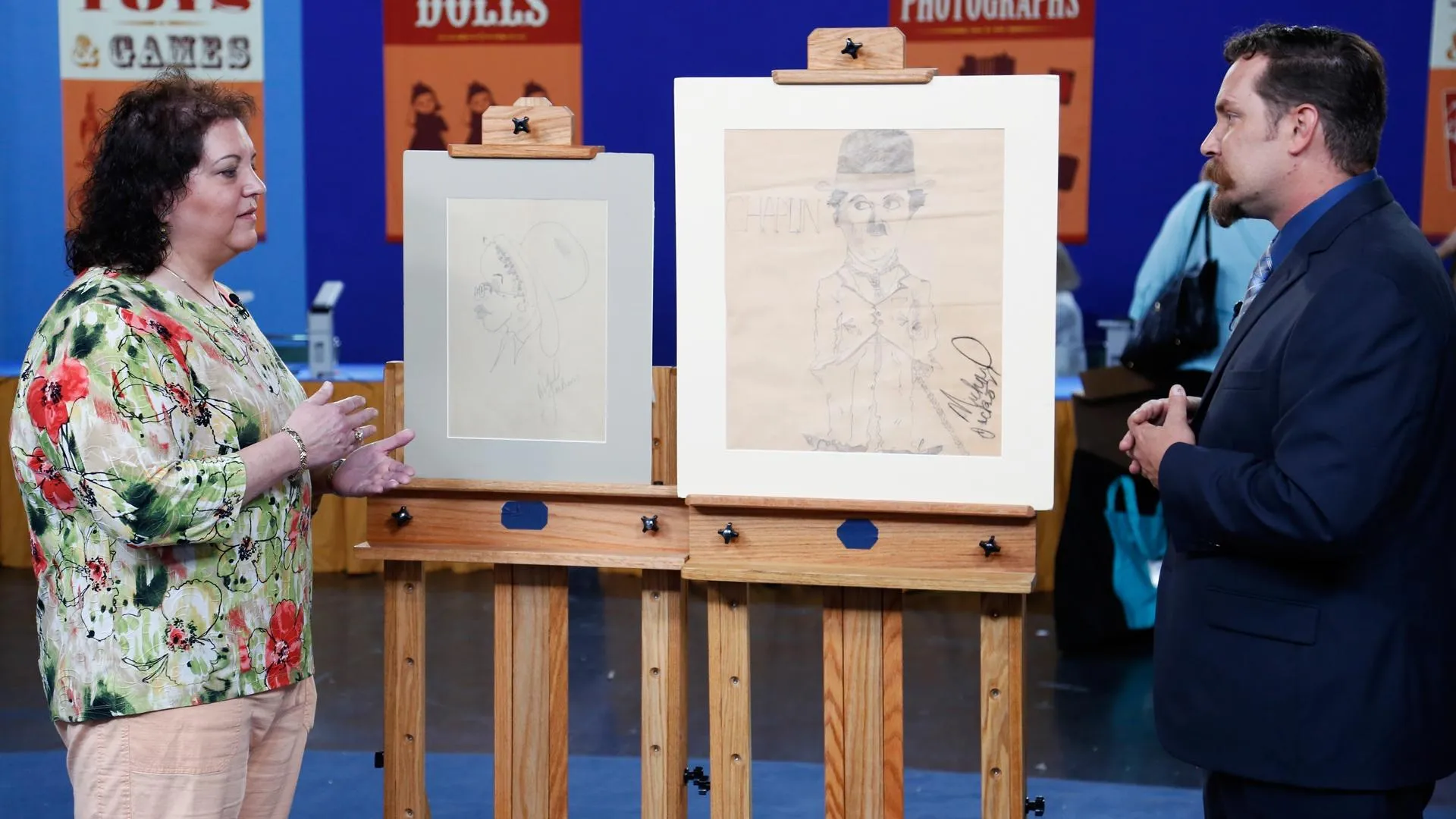GUEST: We got it at an estate sale. I really liked the front of it, and that was what attracted me to it. I like the little flowers here. And I knew it had some bumps and bruises, but I thought it was still pretty.
APPRAISER: And how much did you pay for it?
GUEST: I paid $50.
APPRAISER: How many years ago was that?
GUEST: That was in 2008, so five years ago.
APPRAISER: What you've brought in here is a fairly rare Federal circa 1795 sugar chest.
GUEST: Oh, okay.
APPRAISER: Probably made in Charleston, South Carolina. Inside, we've got this storage well. This is where they'd store the sugar cones, which would go inside. And as you can see, there's a lock here, of course, and the reason that lock was there was because sugar was so valuable and you'd have little hands reaching into it, maybe from children wanting some candy.
GUEST: Who doesn't, right?
APPRAISER: People would sometimes steal it. This piece is made of mahogany, but it's not the ordinary mahogany we see on a piece of Federal furniture. It is so highly figured, all the different contrasting pieces. The top on this is amazing. It's almost like a picture frame, and here's the work of art. And then around it are these pieces of herringbone mahogany, cherry wood, probably ebony. And the great thing about your sugar chest is beyond the proportions, which are so delicate, are these little dainty feet. Do you like those?
GUEST: Yeah, I like the thin legs.
APPRAISER: Look at how delicate they are, it just floats. And as we spin it, you can see the same framing is used on the sides. Look at these striated pieces here. Look at all the work that went into this. By the way, this is all typical of Charleston work. Look at that, even the back is actually framed, so we know that this was meant to be used and carried in the center of the room or wherever someone needed their sugar. These handles are original, and people would like to display these because they were proud. You had to be pretty wealthy to have a sugar chest, especially one like this. Now, your sugar chest has also survived with its original finish.
GUEST: Really?
APPRAISER: This has been untouched since about 1795.
GUEST: That's crazy.
APPRAISER: As far as condition also, it's got some chips, but that doesn't bother me at all. What do you think about the handles?
GUEST: They didn't match it to me.
APPRAISER: Exactly. So this probably had little brass knobs, and you sort of visualize what this looked like. Then one time in the center, somebody put an escutcheon, which would never have been there originally. Right now, Southern furniture is one of the hottest areas out there. Do you have any idea what this is worth today?
GUEST: I have no idea.
APPRAISER: I would put an auction estimate on this table today of $20,000 to $30,000.
GUEST: Really? That's crazy. That's a good find. We'll keep it. (laughing)












